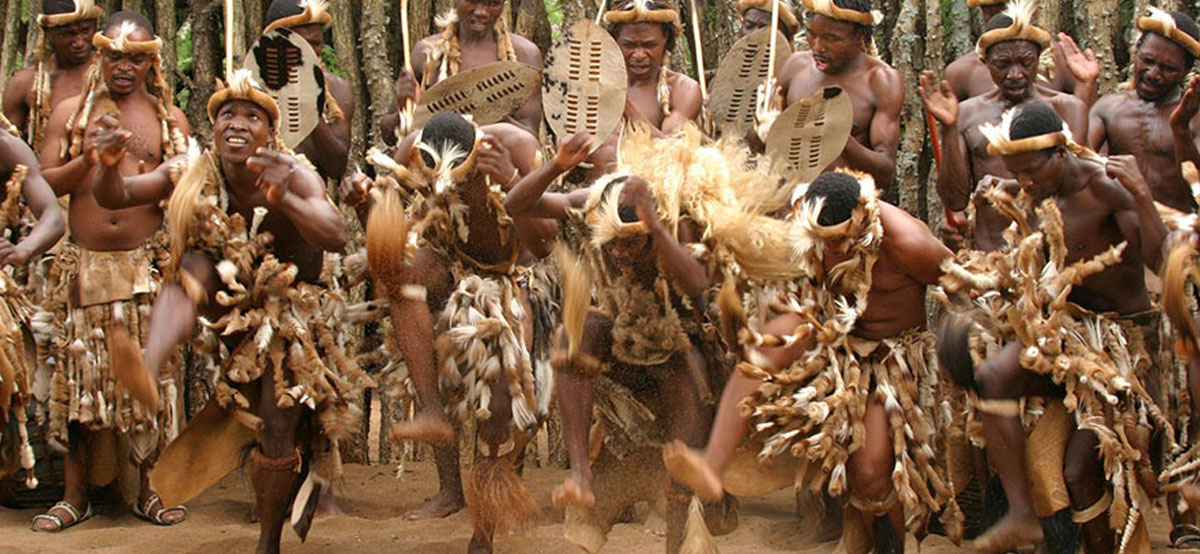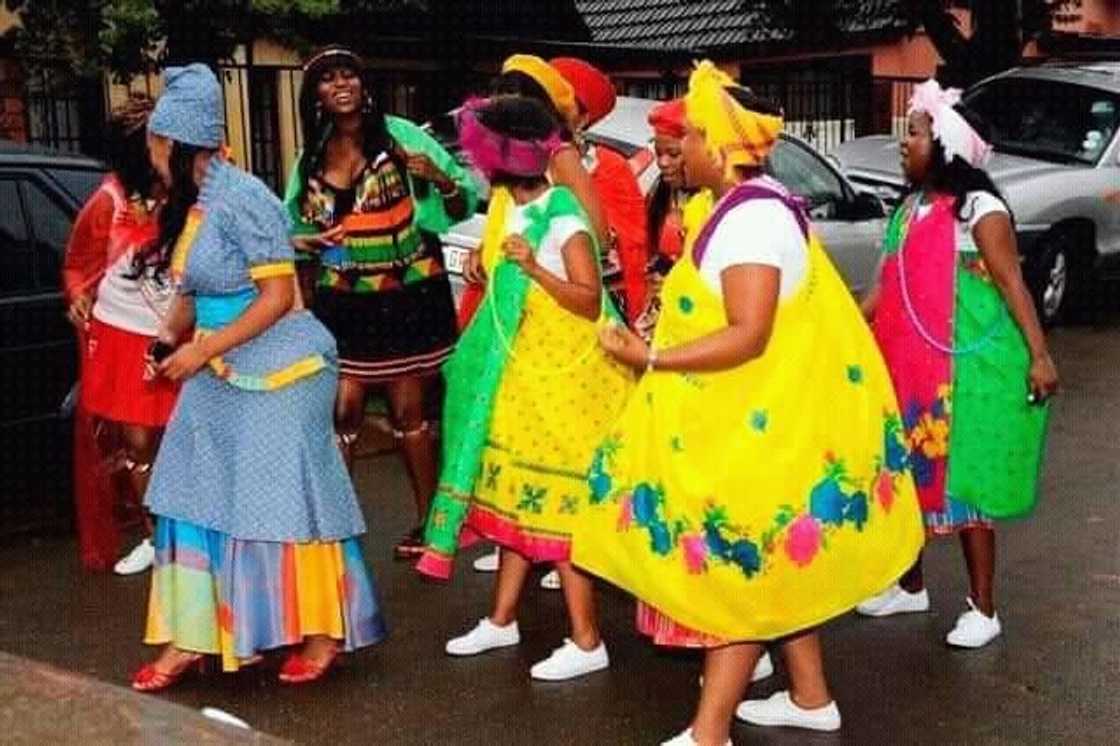The smart Trick of South African Culture Today That Nobody is Talking About
The smart Trick of South African Culture Today That Nobody is Talking About
Blog Article
South African Culture Today - Truths
Table of ContentsSouth African Culture Today for BeginnersSouth African Culture Today Can Be Fun For EveryoneThe 5-Second Trick For South African Culture TodaySouth African Culture Today - QuestionsSouth African Culture Today for BeginnersOur South African Culture Today Ideas
An issue of significance in Zambian villages is the passing away of liked ones. All participants of the town put money, time and initiative with each other for the burial of the deceased.Throughout the grieving duration; men stay outside the home and the women stay inside your home of the deceased. After speaking about the departed, the town strolls to the location of interment to claim their last bye-byes. Songs and dancing is a really essential aspect of the Zambian culture. The various tribal units have their own dance types; nonetheless, makishi is usual among all people.
Our South African Culture Today PDFs
When it involves music, drums are made use of the most, with a selection of drumming events. In Zambia, majority of individuals are Christian; Protestant and Roman Catholic. There are tiny teams of Muslims and Hindus, with the remainder adhering to regional indigenous tribal ideas.

South African heritage and culture is profoundly diverse, and includes lots of various teams of individuals that each have their very own customs and beliefs. Having such a variety of individuals and societies is what makes South Africa so distinct. In truth sense of the phrase, we are a rainbow nation.
Making it the 7th on the checklist of countries with the most Portuguese people in it outside of Portugal. Portuguese is not just a culture, yet it is also a language and a nationality. Portuguese individuals originate from the nation of Portugal in Europe, nevertheless, due to Portugal (like numerous other nations in Europe) checking out the world and overcoming various other countries during the 15th 20th centuries, South Africa has what we call Portuguese South African's living in it.
Some Known Facts About South African Culture Today.
Amongst the famous features of the topography is a plateau that covers almost two thirds of the center of the country. The plateau complicated increases toward the southeast, where it climaxes in the Drakensberg array, component of a cliff that separates the plateau from the coastal locations. The Drakensburg includes Sparkling wine Castle, the greatest optimal in the country.
The region north of the Witwatersrand, called the bushveld, inclines downward from eastern to west toward the Limpopo River, which develops the global border. The western section of the plateau, the middleveld, additionally comes down towards the west and varies in altitude in between the highveld and bushveld. Between the Drakensburg and the eastern and southern coast, the land comes down to the sea.
Nearer the coast there is a low-lying level called the eastern lowveld. Southwest of the plateau the country comes to be gradually extra arid, paving the way to the hostile desert of the Great Karroo, approached the east by the lower, much better watered plateau of the Little Karroo. Separating the dry southern interior from the sandy littoral of the southerly shore and West Cape is pop over to this web-site an additional array, the Langeberg.
Not known Details About South African Culture Today
The nation's racially, ethnically, and politically divided background has actually generated nationwide and subnational signs that still work as signs of the nation, and others signs that are approved only by certain groups. The monoliths to white inhabitant occupation and political moved here prominence, such as the Afrikaner Voortrekker ("leader") Monument in Pretoria and the Rhodes Monument recognizing the British colonial realm building contractor and Cape prime preacher Cecil Rhodes, remain sectarian signs.
The initial modern occupants were the San ("bushman") hunter-gatherers and the Khoi ("Hottentot") peoples, who rounded up livestock (South African culture today). The San may have existed for hundreds of years and left proof of their presence in hundreds of old cavern paintings ("rock art"). Bantu-speaking clans that were the ancestors of the Nguni (today's amaZulu, amaXhosa, amaSwazi, and vaTsonga individuals) and Tswana-Sotho language teams (today's Batswana and Southern and Northern Basotho) migrated below east Africa as very early as the fifteenth century

The two former republics of the Orange Free State and Transvaal (South African Republic) were developed by Afrikaner inhabitants who defeated and dispossessed the Basotho and Batswana. Lesotho would have been forcibly included right into the Orange Free State without the extension of British security in 1869. The ultimate unification of the nation arised from the South African War (18991902) between the British and the 2 Afrikaner republics, which lowered the country to spoil at the start of the twentieth century.
Afrikaners historically considered themselves the only real South Africans and, while granting full citizenship to all homeowners of European descent, denied that condition to individuals of color until the democratic transition of 1994. British South Africans maintain a feeling of social and social link to Great Britain without damaging their identification as South Africans.
Top Guidelines Of South African Culture Today
The variety and fragmentation within ethnic collections and the equilibrium of stress between those groups throughout the twentieth century avoided interethnic civil conflict. While intergroup tensions over sources, privileges, and political supremacy remain, those conflicts are as most likely to match Zulu against Zulu as Zulu against Xhosa or African versus Afrikaner.
From colonial India, British sellers and managers brought the rounded metal decorative roof coverings and slim lace work columns that still typify the outdoor patios of homes in the areas and cities throughout the country. Houses of prayer add a crucial architectural browse around here aspect also in the smallest communities. Along with the skyrocketing steeples and timeless stonework of Afrikaans Dutch Reformed churches, Anglican churches, synagogues, mosques, and Hindu shrines provide selection to the religious building scene.

Butchering and the developing of traditional cereal beer are necessary in securing the involvement and a good reputation of the forefathers who are thought about the guardians of good luck, success, and well-being. Indian neighborhoods preserve their indigenous cooking traditions and apply them on Islamic and Hindu ritual and ceremonial events. Afrikaners and Coloured individuals collect at weekend breaks and unique celebrations at multifamily barbeques called braais, where community bonds are enhanced.
Since this was the key financial venture of both black Africans and white homesteaders, conflict between those groups centered on the possession of grazing land and livestock. In 1867, the largest diamond deposits in the globe were uncovered at Kimberley in the west central area. The riches from those areas aided fund the exploitation of the best gold reef in the globe, which was uncovered on the Witwatersrand in 1886.
The Basic Principles Of South African Culture Today
This resulted in misunderstandings and purposeful misrepresentation in the ventures of white inhabitants and federal government officials with African chiefs throughout the colonial period (South African culture today). In the establishment of African books, some aspects of communal and primarily "tribal depend on" land tenure were preserved, and also in white backwoods, forms of communal period were still practiced in locations with African neighborhoods
After the democratic makeover of 1994, programs for land restitution, redistribution, and reform were instituted, yet development has been sluggish. The white minority still controls eighty percent of the land. Following agricultural land intrusions in Zimbabwe, the Department of Land Matters has vowed to speed up land redistribution.
Report this page